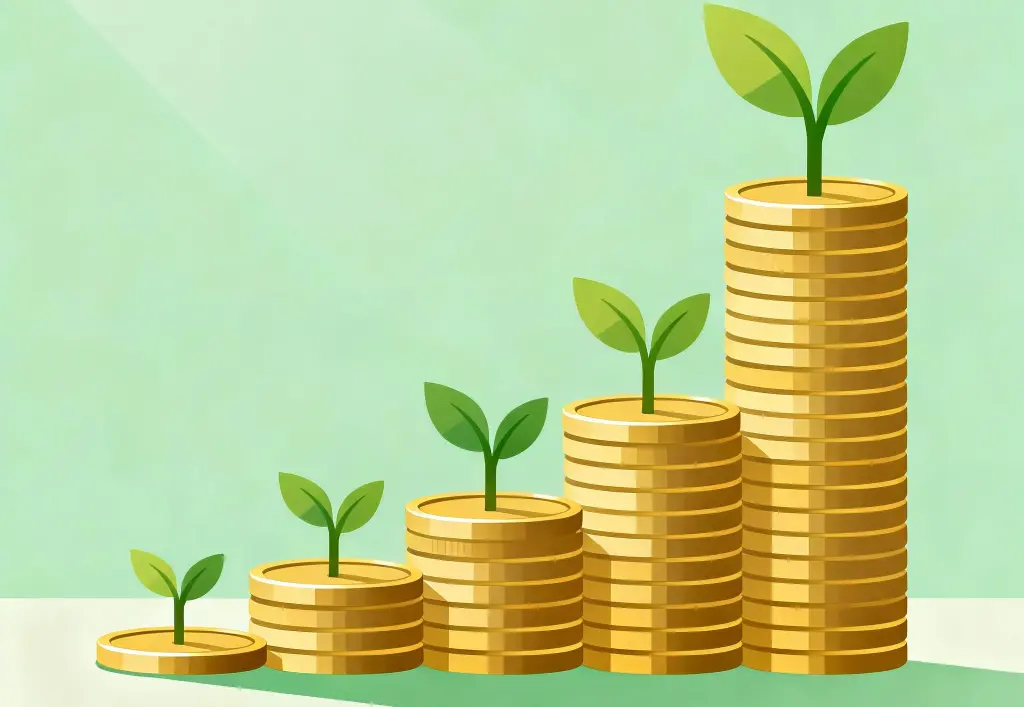Have you ever looked at someone’s investment growth and wondered how their money seemed to “multiply” over time? The secret isn’t luck — it’s the quiet power of compound interest. Imagine planting a single tree and watching not only that tree grow, but also new ones sprout from its seeds. Over time, you don’t just have a tree — you have a forest. That’s what compound interest can do for your finances when you understand how compound interest works and how to apply it consistently.
What Is Compound Interest?
In simple terms, compound interest is the process of earning interest on both your original money (the principal) and the interest it has already earned. This means your money grows exponentially, not linearly.
For example, if you invest $1,000 at a 10% annual interest rate, you’ll have $1,100 after one year. But the next year, you’ll earn interest not just on $1,000 — you’ll earn it on $1,100. Over 10 years, that $1,000 becomes about $2,593 without adding a single extra dollar.
As Investopedia explains, compound interest is often described as “interest on interest,” and it’s one of the most powerful forces in finance when used wisely.
How Compound Interest Works: The Power of Time and Consistency
The most crucial factor in how compound interest works is time. The earlier you start, the greater your growth potential. That’s because each compounding cycle — monthly, quarterly, or yearly — builds on the last.
Let’s see how this plays out:
- If you save $200 per month at 8% annual return starting at age 25, you’ll have about $552,000 by age 65.
- If you wait until age 35 to start, you’ll end up with roughly $247,000 — less than half.
The 10-year delay costs you over $300,000 of potential growth. This isn’t about saving more; it’s about starting sooner.
As a 2024 OECD report on financial literacy highlights, understanding compound interest early is a key driver of long-term wealth creation and financial independence.
In “Dollar Scholar Asks: What Is the Magic of Compound Interest?” (Money.com), the author highlights how even modest contributions, when left untouched, can snowball significantly—and warns that compounding works both ways (applicable also to debt).
Money.com
How to Calculate Compound Interest
You don’t need to be a math genius to see how your money can grow. The formula for compound interest is simple:
A = P (1 + r/n)^(n × t)
Where:
- A = final amount
- P = principal amount
- r = annual interest rate (in decimal form)
- n = number of compounding periods per year
- t = number of years
For instance, investing $5,000 at 7% annual interest compounded monthly for 20 years gives:
A = 5,000 × (1 + 0.07/12)^(12 × 20) ≈ $19,347
You can also use free online calculators from sites like CNBC or The Calculator Site to project your returns easily.
Benefits of Compound Interest: Why It’s the Key to Long-Term Wealth
- It rewards consistency, not perfection.
You don’t need to time the market — you just need to keep investing regularly. - It turns small habits into big results.
Even $100 a month can become tens of thousands over time. - It protects against inflation.
Compound interest helps your savings grow faster than the rise in prices, keeping your purchasing power strong. - It builds financial security.
According to Forbes (2024), people who automate contributions to investment accounts and allow compound growth to work uninterrupted are more likely to reach financial freedom before retirement age.
How to Make Compound Interest Work for You
1. Start Early — Even Small Amounts Count
The earlier you begin, the more time your money has to grow. Don’t wait for the “perfect” moment — start with what you have.
2. Reinvest Your Earnings
Avoid withdrawing interest payments. Reinvesting allows your gains to generate even more gains.
3. Automate Your Contributions
Set up automatic transfers to your savings or investment account each month. Treat it like a fixed bill to yourself.
4. Choose High-Interest Accounts or Low-Fee Investments
Compare different options: index funds, ETFs, or high-yield savings accounts. Even a 1% difference in interest can change your long-term outcome dramatically.
5. Be Patient and Consistent
Compound interest is like fitness for your finances — results take time. The key is to stay invested through both highs and lows.

Compound interest develops with time and consistency
A Simple Exercise: Project Your Future Wealth
Take 10 minutes to estimate how much your current savings could grow in 10, 20, or 30 years using a compound interest calculator. Write down your findings and decide: what small change could you make this month to speed up that growth?
This simple step can shift your mindset from “saving money” to building wealth — and that’s where transformation begins.
Final Takeaway
Compound interest isn’t just a financial concept — it’s a life principle. Growth builds on growth. Whether it’s money, knowledge, or habits, consistency always multiplies your results.
Start today. Let time and patience become your greatest allies. Ten years from now, your future self will thank you for planting the seed today.
Resources to explore:
- The power of compound interest: How to turn small investments into wealth — Fidelity / Kiplinger
- The “magic” of compounding returns — Citizen Mint
- Compound Interest Explained: Einstein’s Eighth Wonder — Mind Math Money


